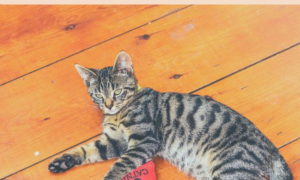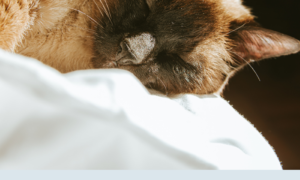March is Poison Prevention Awareness Month, and the week of March 17 – 23 is National Poison Prevention Week, established by the U.S. Congress in 1961. The third week of March is nationally designated to “highlight the dangers of poisonings and how to prevent them.”
Opportunities for trouble abound inside and outside every cat’s home, running the gamut from needles and solvents, to plants. So, National Poison Prevention Week provides opportunities to highlight common dangers in kitty’s midst.
The ASPCA lists the top ten over-the-counter drugs that are toxic to cats, such as NSAIDS, antidepressants, and anti-diabetics.
 The Cornell University Department of Medical Sciences lists numerous things that are toxic to cats, including methlyzanthines (caffeine, theobromine and theophylline – ingredients found in chocolate, coffee, tea, stimulants and medication) pesticides and antifreeze.
The Cornell University Department of Medical Sciences lists numerous things that are toxic to cats, including methlyzanthines (caffeine, theobromine and theophylline – ingredients found in chocolate, coffee, tea, stimulants and medication) pesticides and antifreeze.
Then, there are plants; oh, so many plants. The ASPCA has a list of toxic and non-toxic plants related to cats. Of special note this time of year are all lillies, daffodils, tulips and Lily Of The Valley.
Seeds aren’t exempted. Toxic seeds include apple, and cherry pits. The American Animal Hospital Association (AHAA) website has an excellent list.
Get on your hands and knees to attempt to see what your cat might be interested in tasting or eating. You might be surprised by what you find: rubber bands, twisty ties, needles, push pins, and string. That’s not all, according to The Humane Society of the United States’ common household dangers for pets list.
It’s almost impossible to remember everything, so it’s best to read as much as you can to stop something harmful and possibly deadly before it happens. If in doubt, and certainly if your cat has ingested something she ought not to have, contact the Pet Poison Hotline at 800-213-6680 or the ASPCA Poison Control Center at 888-426-4435.






